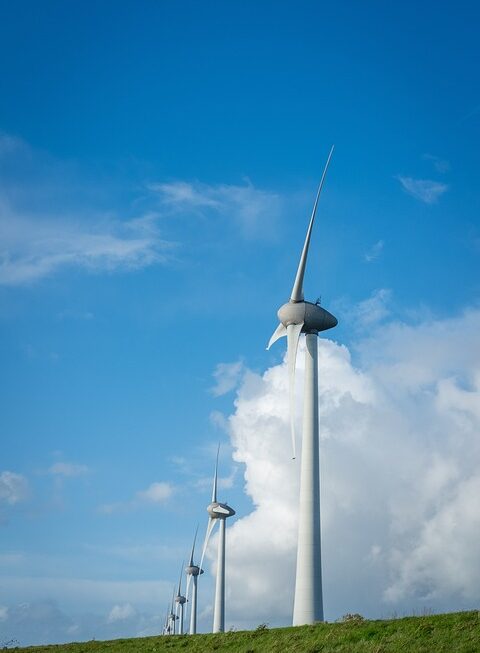[ad_1]
The Economic Impact of Investing in Renewable Resources
Introduction
In recent years, the world has experienced a growing demand for energy, while at the same time facing a pressing need to mitigate the impacts of climate change. As a result, there has been a significant shift towards investing in renewable resources as a means of generating energy while reducing greenhouse gas emissions. This shift has not only had a positive impact on the environment, but it has also created substantial economic benefits. In this article, we will explore the economic impact of investing in renewable resources and the potential for further growth in this sector.
Economic Benefits of Investing in Renewable Resources
Investing in renewable resources such as solar, wind, hydroelectric, and geothermal energy has a number of economic benefits. These benefits include job creation, cost savings, and increased investment opportunities.
Job Creation
One of the most immediate economic impacts of investing in renewable resources is job creation. According to a study by the International Renewable Energy Agency (IRENA), the renewable energy sector employed 11 million people globally in 2018, a figure that is expected to grow to 42 million by 2050. This rapid growth in employment is driven by the increasing demand for renewable energy technologies, as well as the need for skilled workers to install and maintain these systems.
Cost Savings
Investing in renewable resources also has the potential to generate significant cost savings. For example, solar and wind energy are now cost-competitive with traditional fossil fuels in many regions. As a result, businesses and homeowners can reduce their energy costs by investing in solar panels and wind turbines. In addition, the use of renewable energy can also help to reduce the volatility of energy prices, as it is not subject to the same geopolitical risks and market fluctuations as fossil fuels.
Increased Investment Opportunities
The growing demand for renewable resources has also created new investment opportunities. As the technology for solar, wind, and other renewable energy sources continues to advance, there are increasing opportunities for investment in research and development, as well as in the production and distribution of renewable energy technologies. This has the potential to drive innovation and economic growth, while also providing opportunities for investors to generate returns.
Growth in the Renewable Energy Market
The rapid growth of the renewable energy market has been driven by a number of factors. These include increasing concerns about climate change, advancements in renewable energy technologies, and government policies aimed at promoting the use of renewable energy.
Climate Change Concerns
One of the primary drivers of the growth in the renewable energy market is the increasing concern about the impacts of climate change. As the global community becomes more aware of the environmental consequences of burning fossil fuels, there has been a growing push to transition to cleaner, more sustainable sources of energy. This has led to a significant increase in investments in renewable resources, as well as in the development of policies aimed at promoting their use.
Advancements in Renewable Energy Technologies
Another key factor driving the growth of the renewable energy market is the rapid advancements in renewable energy technologies. In recent years, there have been significant improvements in the efficiency and cost-effectiveness of solar panels, wind turbines, and other renewable energy technologies. This has helped to make renewable energy more competitive with traditional fossil fuels, leading to increased investment and deployment of renewable energy systems.
Government Policies
Government policies have also played a significant role in driving the growth of the renewable energy market. Many countries have implemented policies such as renewable portfolio standards, feed-in tariffs, and tax incentives to encourage the development and deployment of renewable energy technologies. These policies have helped to create a favorable environment for investment in renewable resources, while also driving innovation in the sector.
FAQs
Q: What are some examples of renewable resources?
A: Some examples of renewable resources include solar energy, wind energy, hydroelectric power, geothermal energy, and biomass.
Q: How does investing in renewable resources benefit the environment?
A: Investing in renewable resources reduces greenhouse gas emissions and air pollution, helps to conserve natural resources, and contributes to a more sustainable energy future.
Q: What are some of the economic benefits of investing in renewable resources?
A: Investing in renewable resources creates job opportunities, reduces energy costs, and can lead to increased investment opportunities and economic growth.
Q: What are some of the factors driving the growth of the renewable energy market?
A: The growth of the renewable energy market is being driven by increasing concerns about climate change, advancements in renewable energy technologies, and government policies aimed at promoting the use of renewable energy.
Conclusion
The economic impact of investing in renewable resources is substantial, with job creation, cost savings, and increased investment opportunities being just a few of the benefits. As the world continues to grapple with the impacts of climate change, and as renewable energy technologies continue to advance, it is likely that the economic benefits of investing in renewable resources will only continue to grow. This presents a significant opportunity for individuals, businesses, and governments to not only contribute to a more sustainable energy future but also to reap the economic rewards of doing so.
[ad_2]



